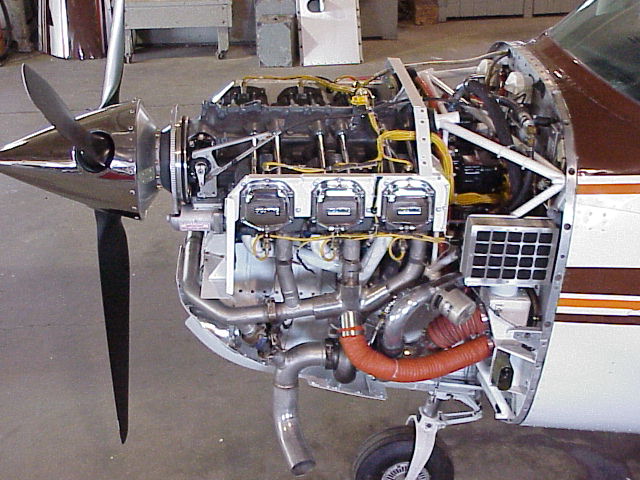| Types
of Engines |
http://en.wikipedia.org/wiki/File:Jet_engine.svg
 http://www.lvaircraft.com/cgi-bin/waa1gate.isa?WAA_PACKAGE=BDS& WAA_FORM=BDSShowListing&U=%7C~%7C&C=0000000000JT&L=00000000A0KG |
The
reciprocating engine seen to the left, is much
smaller than a jet engine. The basic cycle is just
like the standard heat engine. These engines are
usually far less efficient, but are affordable and
reliable for a personal aircraft. Most of these
engines will allow max speeds from 100-150 mph for
cruising, and make for perfect bush planes. The
Engines turn chemical energy into mechanical work,
which turns the propeller. Jet engines are much more complex, and in turn cost much more money. They take the air, compress it, combust the air with fuel, and produce exhaust. During this process thrust is created and is the mechanism that moves the plane. There is a turbine, compressor, and combustion chamber all in one large unit. This makes calculating the efficiency slightly more difficult but still very doable. The Jet engines run at much higher temperatures also, and gives a more complete burn of the chemical energy. A 1st law analysis of an open system can be done to figure out the work, and details of a jet engine. |
Introduction | Aerodynamics | Heat Engines | Types of Engines | Lightning | Bibliography
All Right Reserved © 2006 by bprizze
http://heartlessg.4uhost.info Web Master